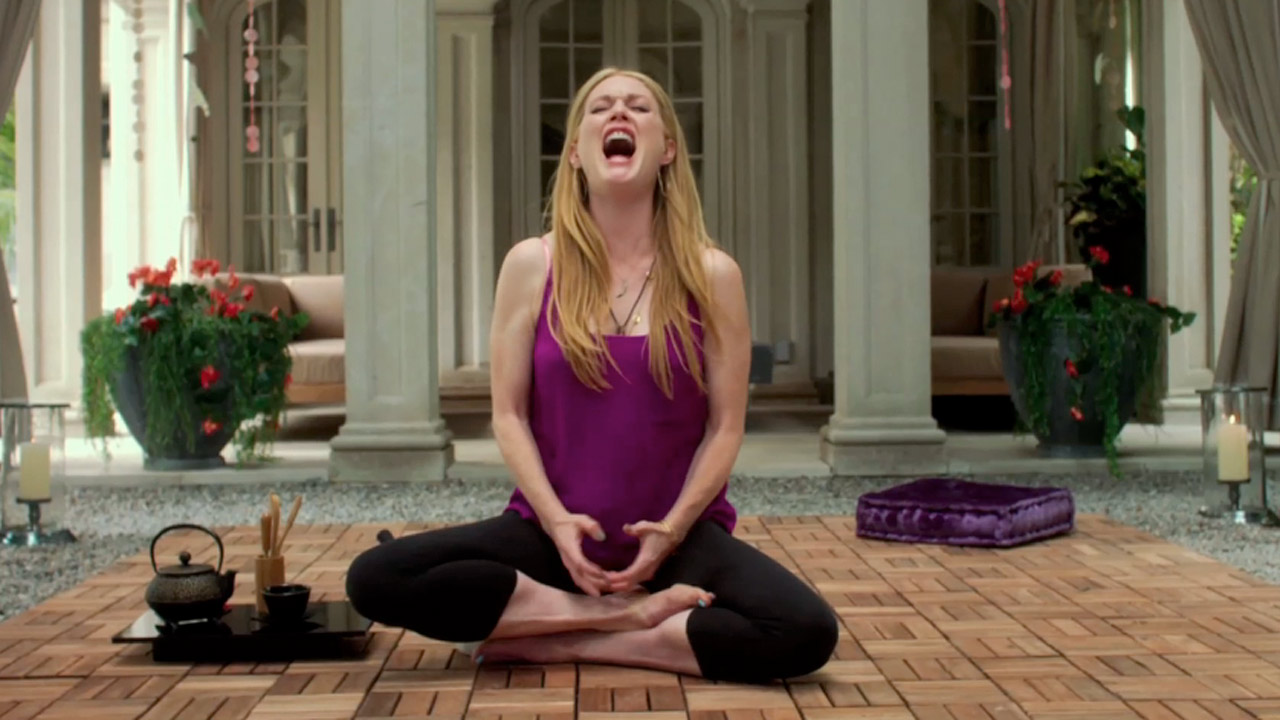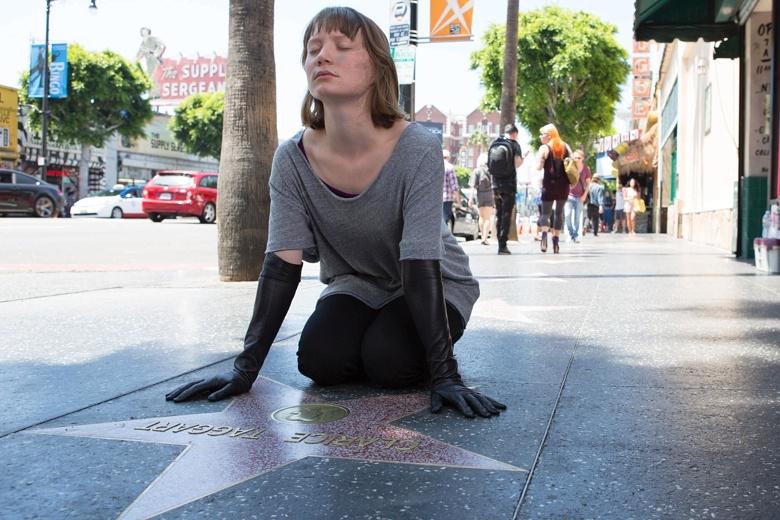One of David Cronenberg’s trademarks as a filmmaker is his exploration of the body, particularly the horrors of its fragility. Through films like Videodrome (1983), The Fly (1986) and Existenz (1999), he helped pioneer the “body horror” genre. He adopted bogeyman tropes to stories where the scares come not from external monsters or villains, but from within—from the embodied self’s toxic neurosis.
His movies have a cold, nihilistic view of humanity in the modern age. Humans are often indistinguishable from animals (bursts of animalistic, emotionless violence are regular Cronenbergian motifs) or simply machines, soulless cogs in a meaningless web of money, sex, drugs, and power.
 Focus World
Focus WorldMaps to the Stars, a harsh and exaggerated look at the bleak goings-on of celebrities in Los Angeles, is no exception. With its body-image obsession, Botox body-alteration tendencies, and animalistic views of sex and survival, Hollywood is in many ways the perfect backdrop for Cronenberg’s “body horror” fascination.
Almost too perfect.
Maps zeroes in on all the worst things about Hollywood (especially actors) and cynically pushes them to the limits of grotesquerie, but does it have anything insightful to offer? Unlike other “inside Hollyweird” films by auteur directors, Maps is neither beautiful (like David Lynch’s Mulholland Drive), nor smart (like Spike Jonze’s Adaptation), nor funny (like Christopher Guest’s For Your Consideration). It’s just gross.
Maps follows a series of interlocking, incestuous (both figuratively and literally) storylines involving a cadre of highly unlikable Hollywood people: an aging actress (Julianne Moore, exceptional as always), a schizophrenic personal assistant (Mia Wasikoska), a past-his-prime child actor (Evan Bird), a depressed stage mom (Olivia Williams), a new age self-help guru (John Cusack) and a screenwriter/limo-driver (Robert Pattinson), inspired in part by Maps’ own screenwriter, Bruce Wagner, who got his start driving limos for the Beverly Hills Hotel.
All of these characters are drug-addled, self-absorbed, morally hollow, and repellant to one another. Their interactions—even among members of the same family—are coldly detached and self-interested. These people are simply bodies, animals, using each other for carnal or survival needs. They have been scarred and broken by their parents and jaded by an inescapably hostile, survival-of-the-fittest world.
For these people, sex is a power play more than pleasure. Zoloft and Xanax are more necessary than bread and water. Spirituality is useful only as a tool to help deepen a performance in a role “made for Best Supporting.” Things of metaphysical significance—love, death—are vague abstractions that only register as ghostly apparitions of broken relationships and specters of unresolved guilt. Any notion of sacrifice or an others-focused-life is completely foreign to these people.
 Focus World
Focus WorldThough Maps feels a bit cartoonish and over-the-top at times, it does capture the insularity and echo-chamber detachment of Hollywood, with its incestuous and morbidly self-involved orientation. No wonder three of the last four “Best Picture” Oscar winners have been films about acting: Birdman (2014), Argo (2012) and The Artist (2011). The Academy—made up largely of Hollywood actors—loves nothing quite as much as itself.
With Maps, Cronenberg skewers this self-absorption but offers no solution or hope for how it could be otherwise. His bleak view is that humans are all just decaying, destructible animals desperately clawing around in a dog-eat-dog world. Hollywood caricatures are just one example—a particularly vivid and easy example—of a more existential problem.
But as true as it is that our instincts are depraved and narcissism is at our core, Cronenberg seems to miss—or ignore—another truth about humans: we can make sacrificial decisions out of self-less, others-focused love. This is one of the things that distinguishes humans from animals.
A movie like Maps presents to the Christian viewer a vision of life exactly opposite from the one Christ calls us to. In this way it is almost useful as a cautionary tale or argument-by-contrast for Christianity’s countercultural offer. Where Maps showcases a world where bodily perfection and control are idolized and ultimately illusory, Christianity calls its adherents to present their bodies as living sacrifices (Rom. 12:1). Where Maps depicts a world of inescapable demons, depravity and self-destruction, Christianity offers a “no condemnation” pathway out of sin and the weakness of flesh (Rom. 8).
If there is anything redeeming about Maps, it is that Cronenberg’s gaze, cold and emotionless as it may be, is not entirely unsympathetic. As vile as his characters are, Cronenberg clearly laments their brokenness, even if their plight is largely hopeless.
There is something mysteriously missing in this dream-land of Hollywood, and it probably has to do with the magic and hope that originally drew so many of its aspirants. What are all these hapless creative people grasping for, ultimately, and why are audiences still so hungry for the magical “escape” of movies? The disconnection between the otherworldly transcendence implicit in those questions and the this-worldly depravity of life behind-the-scenes is interesting indeed.
 Focus World
Focus WorldThough I’d never see it again and don’t recommend it to anyone, Maps is at least a reminder of the emptiness behind the cultural zeitgeist of “following your dreams,” “finding yourself” and “being who you want to be.” Though they seem to suggest limitless freedom, these ideas are ultimately crushing burdens, confining people in the prison of self-actualization and enslaving them to the tyranny of applause-driven identity. This is perhaps the ultimate “body horror” of all, epitomized in the Hollywood celebrity cult/culture. It’s an insidious force we must confront and an untruth we must debunk.
Caveat Spectator
Maps to the Stars is a vivid portrait of Hollywood depravity, so naturally it’s quite unseemly on nearly every R-rated front. There is graphic sex and nudity, constant foul language, constant drug and alcohol consumption, gory violence involving an Oscar-esque statuette as a blunt-force weapon, violence toward a dog and several scenes of violence toward children, jokes about a child character who dies, a scene that takes place with a constipated character on the toilet, and a general ambience of darkness and amorality. Unfortunately these elements are made worse by the fact that the film is devoid of redemption of any sort. Needless to say, I don’t recommend it.
Brett McCracken is a Los Angeles-based writer and journalist, and author of the books Hipster Christianity: When Church and Cool Collide (Baker, 2010) and Gray Matters: Navigating the Space Between Legalism and Liberty (Baker, 2013). You can follow him @brettmccracken.












